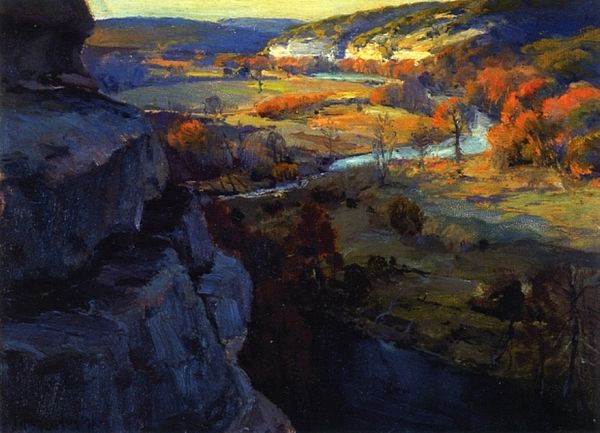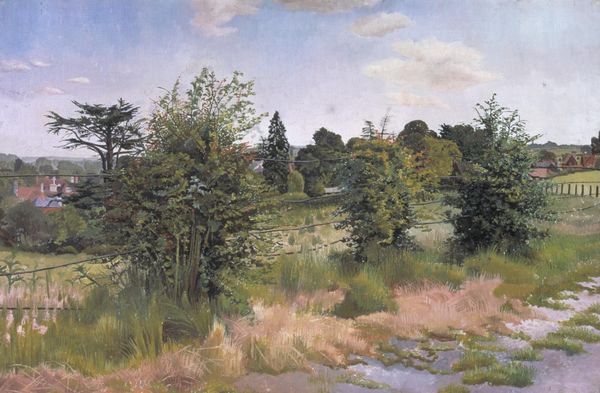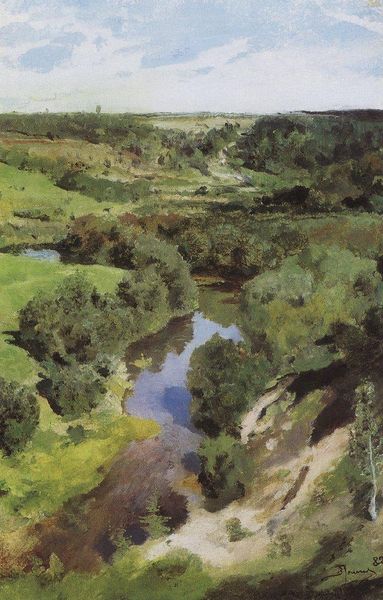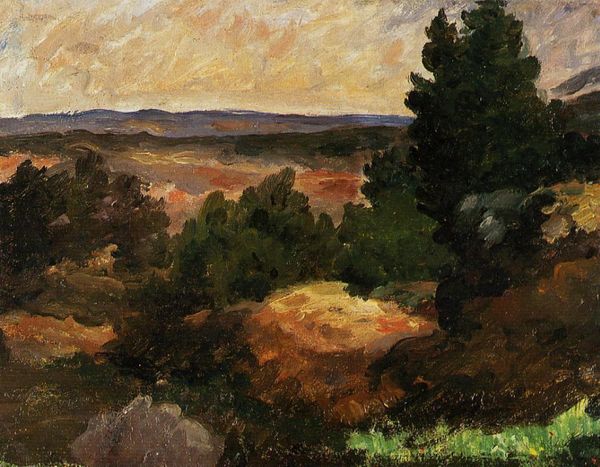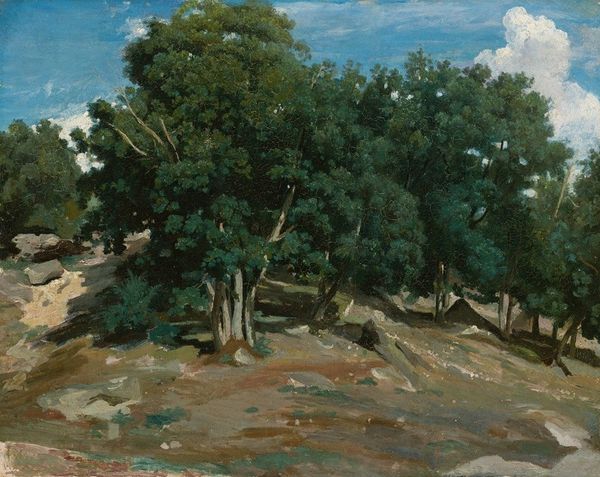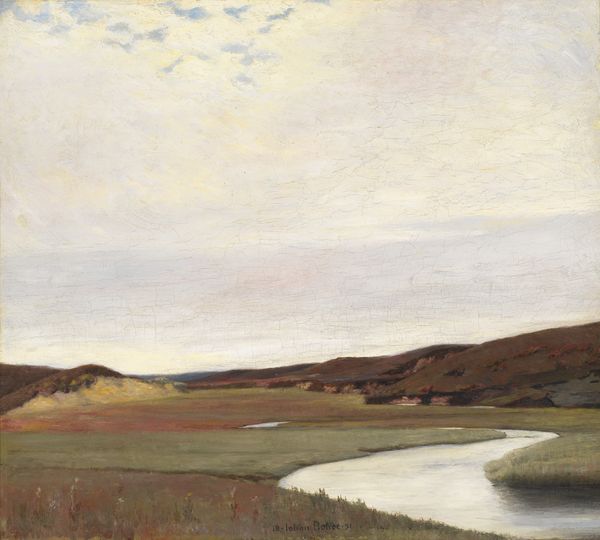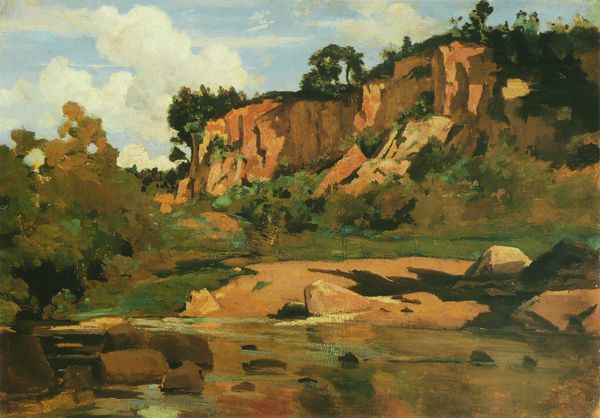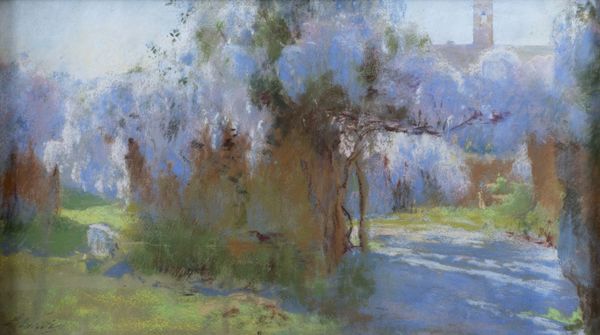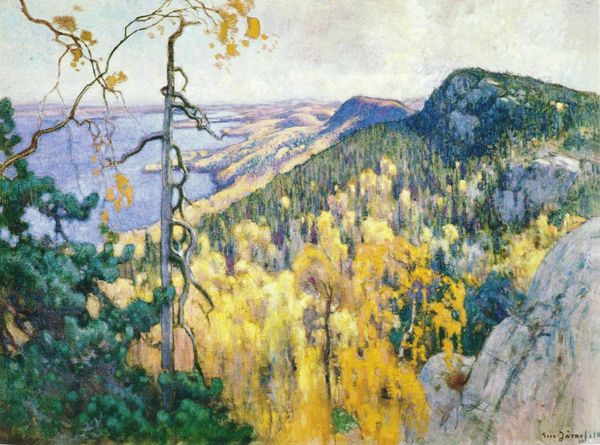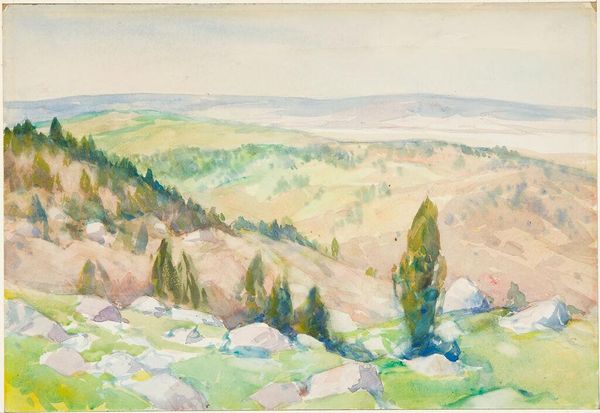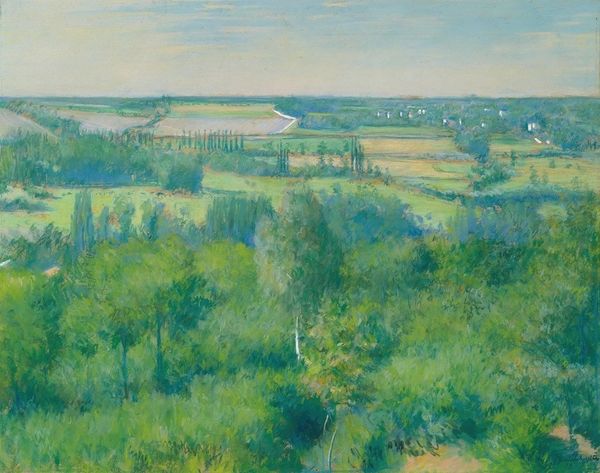
painting, oil-paint
#
painting
#
impressionism
#
oil-paint
#
landscape
#
impressionist landscape
#
oil painting
#
russian-avant-garde
#
realism
Copyright: Public domain
Curator: This painting, known as "Landscape with a River", is by Arkady Rylov and seems to exemplify his venture into impressionistic style. What do you first notice? Editor: Immediately, I'm struck by the heavy brushstrokes, particularly in the foliage. It feels very tactile, like you could reach out and feel the texture of the paint itself. And the unusual reddish-brown river—it draws the eye in. Curator: Absolutely. Rylov was known for his attention to materiality. Observe how he manipulates oil paint to render light and shadow. It's almost sculptural, deviating from traditional Russian landscape painting which tended toward realism. Editor: It certainly pushes the boundaries of what was considered "acceptable" landscape painting at the time. I wonder how it was received, given the socio-political climate and its move away from the representational. Curator: Precisely. It's important to consider the context: the Russian avant-garde sought to break with the past. This approach can also be seen in the bold color palette. It challenges conventional notions of beauty within nature, steering it into a contemporary direction. Editor: The scale is fascinating too. Even without knowing the exact dimensions, it feels intimate, domestic, not the grand, sweeping landscapes often commissioned by the aristocracy. This accessible nature lends it to a wider, possibly emerging middle-class, viewership. Curator: Exactly. And this informs a move away from art being seen solely as decoration or propaganda. Its presence in galleries serves a cultural role in fostering a more progressive idea of art’s value and how its perceived. The use of light suggests a brief, passing moment in nature. Editor: Which in turn raises questions about labor. Was this painted en plein air? And what would that kind of artistic production have signified at the time? It feels like more than just observation, the application implies experience, toil, and tangible process of the maker, Rylov himself. Curator: It is about seeing both labor and artistic choices working together towards its purpose and social existence, reflecting the time in which the landscape lives in reality, or dreams, in our memory. Editor: It does provoke one to reflect, a worthy insight.
Comments
No comments
Be the first to comment and join the conversation on the ultimate creative platform.
